Earth Celebrations
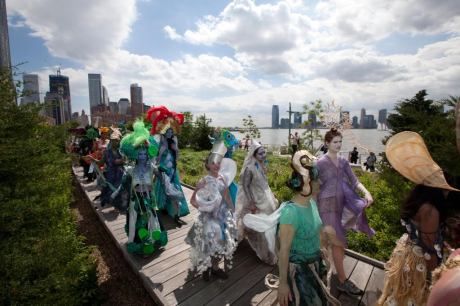
Earth Celebrations, Programs include pageants and processions engaging communities to effect ecological and social change through the arts, http://www.earthcelebrations.com Photo Credit: William Bourassa Jr.
“Social practices, rituals and festive events are habitual activities that structure the lives of communities and groups and that are shared by and relevant to many of their members. They are significant because they reaffirm the identity of those who practise them as a group or a society and, whether performed in public or private, are closely linked to important events. Social, ritual and festive practices may help to mark the passing of the seasons, events in the agricultural calendar or the stages of a person’s life. They are closely linked to a community’s worldview and perception of its own history and memory. They vary from small gatherings to large-scale social celebrations and commemorations.” (Source: Social Practices, Rituals and Festive Events, UNESCO)
Processions
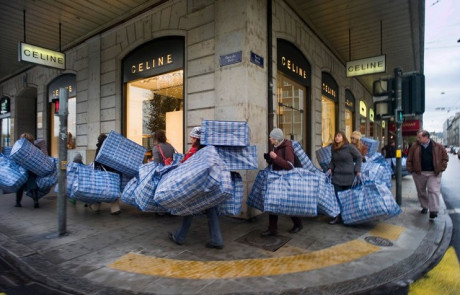
Artists: Ukrainian artists Yuriy Kruchak and Yulia Kostereva in Geneva 2009, The Calvert Journal, http://www.calvertjournal.com, Photo Credit: William Res
“[Ukrainian artists Yuriy Kruchak and Yulia Kostereva] invited 20 people to carry 80 plaid plastic raffia bags (commonly associated with refugees and migrants) across the city, on public transportation, and through popular tourist sites. The bags blocked the beautiful vistas and caused cramped conditions on buses. By bringing these bags, and the issues they referenced, out into public view, they not only attracted the attention of passers-by, but put the individuals carrying them in the position of the migrant, with all (angry) eyes upon them. The action turned public space into a space for dialogue, rather than simply a place of tourism and entertainment.” (Source: The Calvert Journal, Street Appeal: A Decade of Socially Engaged Performance Art from the former East – Croatia, Estonia, Moldova, Ukraine , February 15, 2016)
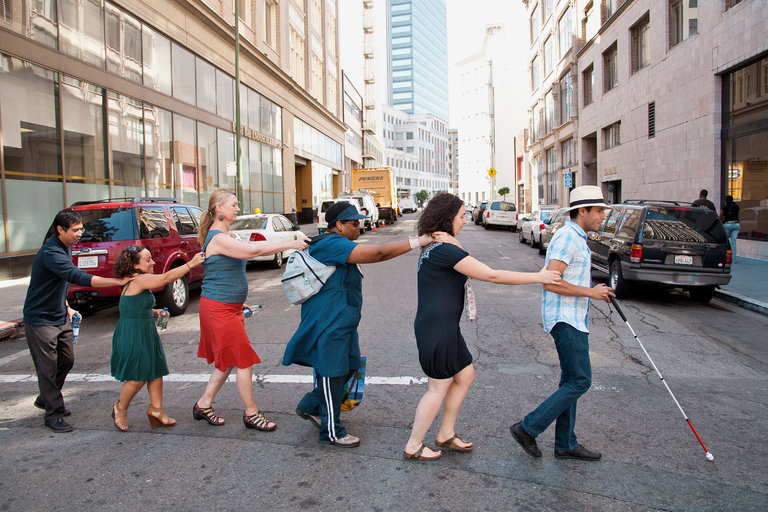
Photo Source: Heather Zinger, NY Times, Carmen Papalia leads an eyes-shut walking tour called “Blind Field Shuttle.”
Social Practice Degrees Take Art to a Communal Level
By DANIEL GRANT, NY Times
“I wanted to learn strategies for engaging folks in caring about disability,” said Mr. Papalia, an English major as an undergraduate. He then ticked off the skills needed for social practice art: “communication, organization, presentation, negotiation and facilitation.”
WHAT IS SOCIAL PRACTICE ART?
Defining social practice is no easy thing. Harrell Fletcher, who directs the concentration at Portland State, describes it in terms of what it isn’t: It is “the opposite of studio practice. It’s not all about the artist, and it isn’t assumed that work will go into a gallery.”
To Mark Tribe, chairman of the M.F.A. fine arts department at the School of Visual Arts in New York, it “is about artists collaborating with people in communities.” The aim is to bring about heightened awareness of societal, cultural, ecological or political issues that are of immediate concern to that community.
The Bealtaine Festival

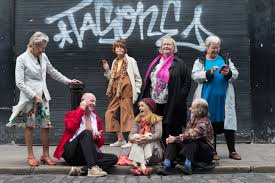
Age and Opportunity: The Bealtaine Festival/Celebrating Creativity as we Age, http://www.ageandopportunity.ie
“The Bealtaine festival was established in Ireland in 1996. An estimated 120,000 people now take part in the Bealtaine festival, making it one of Ireland’s biggest arts festivals. From dance to cinema, painting to theatre, Bealtaine showcases the talents and creativity of both first-time and professional older artists. It is a chance for people to make new and challenging work, a chance to communicate traditions between the generations. It is a chance for the novice to discover a talent until then unseen and a chance for a long-dormant skill to find a new outlet.” (Source: http://www.ageandopportunity.ie
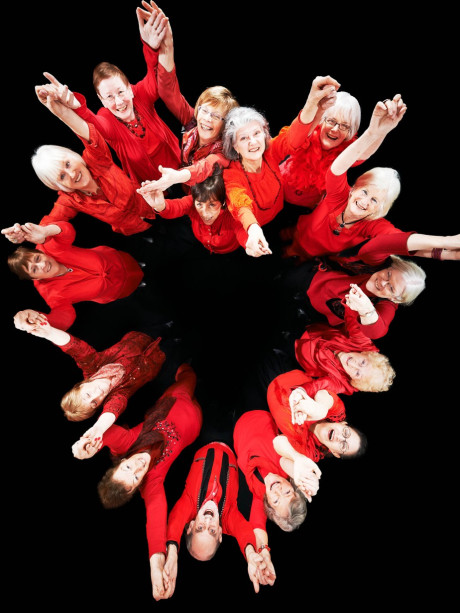
Photo: CoisCeim Dance Theatre, Love Song and Dance. Photo_Ros-Kavanagh
Welfare State International
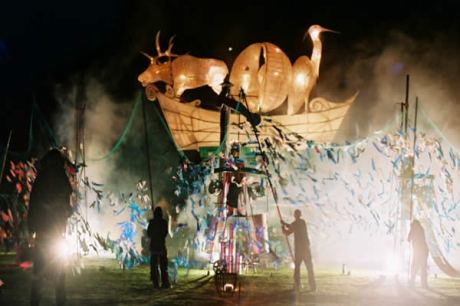
Photo: Welfare State International, 2006, Longline – The Carnival Opera
Philosophy and Values, Welfare State International, http://www.welfare-state.org
Welfare State International (WSI) is a company of artists who pioneer new approaches to the arts of celebration and ceremony in the U.K. and internationally.
We are seeking a culture which may well be less materially based but where more people will actively participate and gain power to celebrate moments that are wonderful and significant in their lives.
We advocate a role for art that weaves it more fully into the fabric of our lives; that allows us to be collaborators rather than spectators:
Building our own houses, naming our children, burying our dead, announcing partnerships, marking anniversaries, creating new sacred spaces and producing whatever drama, stories, songs, ceremonies, pageants and jokes that are relevant to these new values and iconography.
We design and construct performances that are specific to place, people and occasion.
Special festivals of celebration that reach a wide audience, collaborative exhibitions and installations, original songs and soundscapes, and ceremonies for important occasions in people’s lives.
WSI’s artists are deeply concerned for the survival of the imagination and the individual within a media-dominated consumer society, in which art too has become a commodity. All our work – especially our generation of primary artwork – takes a holistic and educational perspective.
Our long-term aim is to establish creative communities on our doorstep: to work in partnerships to develop a creative society where the full potential of each individual may be realised in a supportive environment, through active participation and imaginative play.
We offer full access and opportunities for the dispossessed and seek a multi-generational and multi-ethnic congregation.
Art has a central and radical role in our lives. In the everyday, it’s about what we value, how and why we celebrate. (Source: Philosophy and Values, http://www.welfare-state.org)
Winter Solstice Lantern Festival, Vancouver
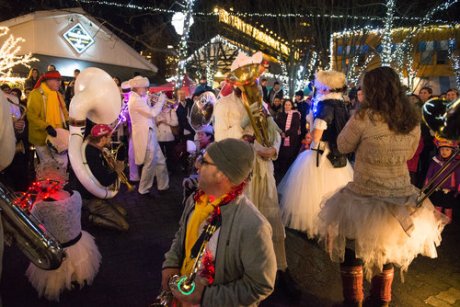
Photo: Winter Solstice Lantern Festival in Vancouver, Secret Lantern Society, Vancouver http://www.secretlantern.org The Secret Lantern Society’s motto ‘One Festival, Many Neighbourhoods’ is a celebration of art, culture and light within four Vancouver neighbourhoods. Community workshops in advance of the winter solstice facilitate the making of lanterns. These lanterns are carried as part of neighbourhood processions that lead to unique celebrations combining entertainment and spaces for reflection.
Night for All Souls, A Night for Honouring the Dead
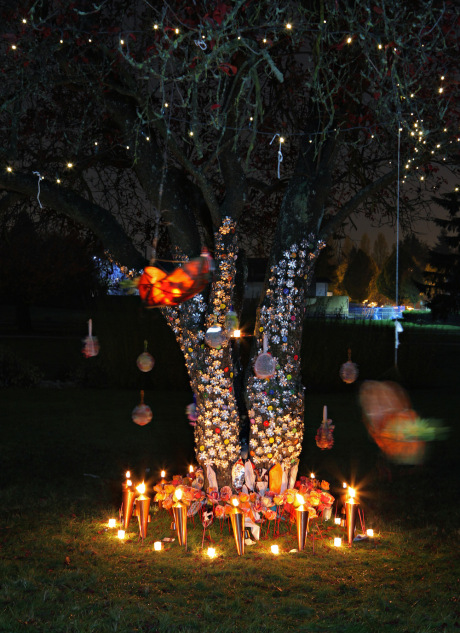
Night for All Souls, http://www.nightforallsouls.com is an annual cultural event curated by artists Paula Jardine and Marina Szijarto at the Mountain View Cemetery in Vancouver. “It offers the public the opportunity to remember their dead…in a gentle atmosphere of contemplative beauty.”
“The project has been part of the revival of the role of this urban cemetery in the life of an increasingly secular and multi-cultural community.”
“In many cultures around the world, the days at the end of October and beginning of November are considered an important time for honouring the dead in our lives. In our modern, urban, and relatively transient culture, traditional “village” customs have been left behind, though not the human impulses that led to these traditions. All Souls at the Mountain View Cemetery is a non-denominational sacred event, and an opportunity for people to share their own customs and experiences.” (Source: Night for All Souls, http://www.nightforallsouls.com)